COASTAL LANDFORMS
A coast is a land or area near the ocean or sea. Coastal zone or line is a part of the coastal land bordering the sea or the part which can be reached by the strongest sea waves. The term is related to the study of the coast.
Definition of terms
Swash: This is the forward movement of waves from the coastline.
Backwash: This is the backward movement of waves from the coastline.
Wave: The upward and downward movement of water following the direction of wind.\
Crest: The highest apart of the wave.
Trough: The lowest part of the wave.
Wavelength: The distance from crest to crest or trough to trough.
Wave height (pitch): The distance between the crest the trough. The size of the wave or wave or wavelength depends on the strength of the wind, i.e. the stronger the wind the larger the waves and wavelength, and vice versa.
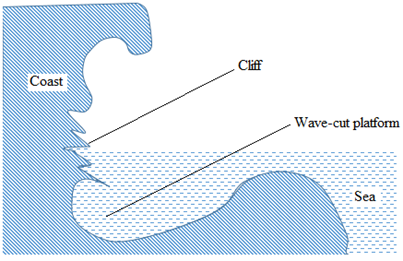
The coast has various physical features often termed as coastal landforms. These features have been formed due to various factors or changes (natural and manmade) which have affected the coastline or coastal zone. There are different factors for the changes or evolution in the coastline (the factors influencing the development of a coastline). The factors are divided into two groups:
a) Natural factors
This includes the work of ocean waves, currents and tides and agents of erosion, transportation and deposition. For example, the coastline may be affected by marine (wave erosional process forming such features such as cliffs, sea caves, wave-cut platforms, etc) and by marine (wave) deposition forming such features as beach, spit, sand bars etc.
The nature of the coastal rocks, i.e. Whether the coastal rocks are resistance to wave erosion or weathering or not. Where the coastal is resistant to marine erosion and weathering, coastal cliffs and headlands may be formed. Where the coastal rocks are not resistant to marine erosion and weathering, bays and caves will be formed.
The trend of the coastline – this refers to the direction and orientation of the coastline in relation to the marine erosional and depositional processes, e.g. steeply sloping coastline may favour the development of marine depositional features such as spits.
The effects of glacier and ice sheets reaching the sea or ocean. These may increase the sea or ocean level and hence lead to the submergence of the coastal areas forming landforms such as fiords (Fjords), and Rias.
Volcanic eruption and earthquakes along the coast. These may from various volcanic coastal features or may cause displacement or faulting of the coastal rocks.
Growth of reefs along the eastern coasts of Tropical Ocean water, e.g. fringing reef, barrier reef, atoll, etc.
b) Man-made factors
Through engineering activities such as construction of ports and dredging of estuaries.
Through land reclamations processes of agriculture, settlements or recreation
Through construction of dykes and lifeguard towers.
Through quarrying activities along the coast e.g. quarrying of sand and gravels.
Mining along the coast.
Fishing by using illegal means such as dynamites or explosives. Marine (wave) erosion refers to the coast by waves (current and tides). Processes involved in marine erosion (marine erosion process) are
Abrasion (corrosion) : The erosion of the coastal by the material carried by waves
Chemical solution (corrosion): This occurs where the waves dissolve and erode soluble coastal rocks e.g. limestone.
Hydraulic action of waves: This is the erosion of the coastal rock by the power of water (i.e. water waves)
Attrition: This is the erosion that occurs where the materials carried by waves collide and break into small particles which are the transported by waves.
NB: The above marine erosional processes may occur simultaneously although one process may be more dominant than the others. Marine (wave) erosion occurs where backwash is stronger than swash.
Marine (wave) erosional features (land forms)
Ocean cliff: This is rough, steep sided coastal rock facing the sea or ocean. It may be formed due to marine abrasion.
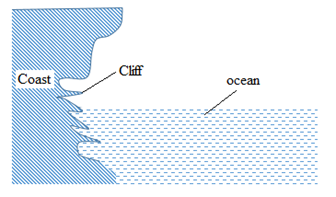
Caves, goes, arches and stocks: These are features produced by wave erosion during the development of cliffs.
Features produced by wave deposition
Beach: This refers to a deposit of mud, sand or pebble on the sea store. A beach has a gently sloping surface, usually formed between low water and high water levels.
Beach
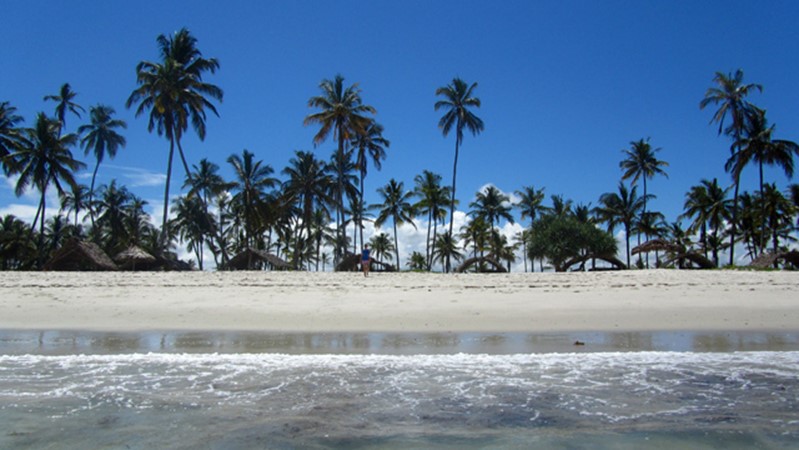
Types of beaches
Storm beach – beach formed by materials (pebbles, stones, mad, sand, etc) deposited by beyond the normal level reached by waves at high tide.
Bay beach – a beach formed by materials deposited at the bay.
Barrier beach – a beach development from an underwater offshore bar as the bar moves towards the land. It is a long ridge of sand, parallel to the coast and separated from it by a lagoon.
Spit: Spite is a low, narrow ridge of pebbles or sand joined to the land (mainland or island) at one end, with the other end terminating in sea. It is formed by deposition of material by long shore drift.
Formation of a spit
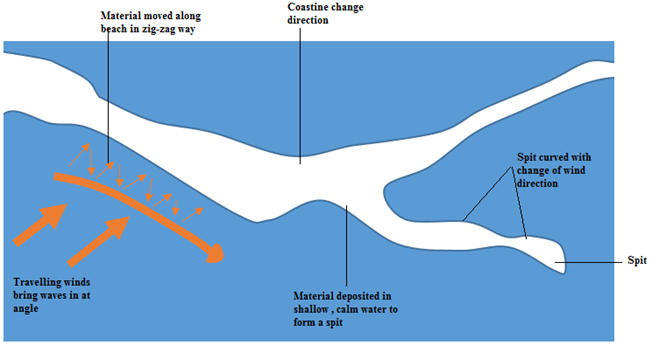
Bar: The words spit and bar are often confused and misused. A bar is a ridge of material, usually sand, which lies parallel, or almost parallel, to the coast. Unlike a spit, a bar is not attached to the land.
Formation of a bar
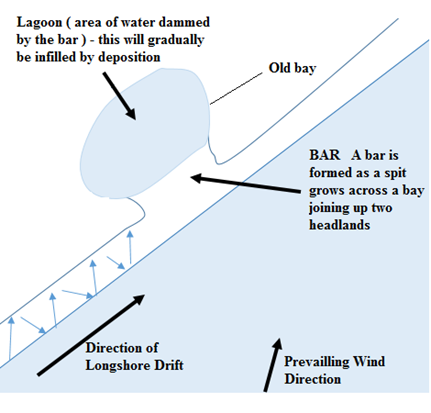
Tombolo: This is a bar that joins an island to the mainland.
Formation of a tombolo
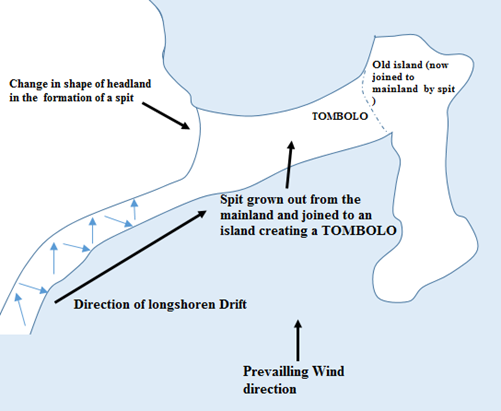
Offshore bar: This is an offshore bar that develops on the gently sloping sea bed, in an offshore zone where sand is thrown up by waves breaking some distance from the coast. The sea waves scoops up sand which is thrown forward where it accumulated as an offshore bar.
Mudflat: This refers to fine silt deposited along gently sloping coasts, especially in bays and estuaries. This deposition of silt, together perhaps with river alluvium, results in the building of a platform of mud called mudflat.
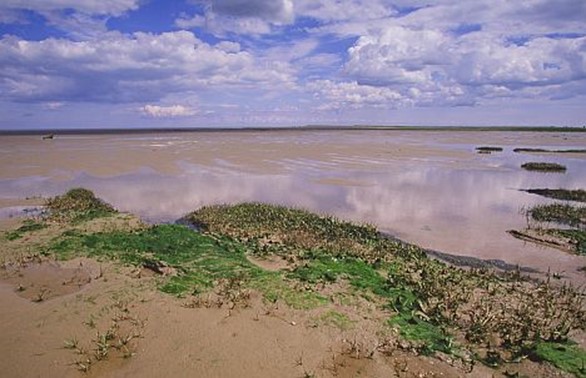
Mudflat.
